Most people have heard one version or another of the following quote: “Those who cannot remember the past are condemned to repeat it.” In fact, history repeating itself is a common warning in all walks of life. Children are taught this in school to help them listen in history class. People going through breakups are reminded of it as they consider going back to their ex. Humanity is constantly reminding itself that everyone must learn from their mistakes. Yet, one look at our history proves that this reminder is often ignored or forgotten.
Many times when history has repeated itself it’s common knowledge, cited in history classes around the world. There have been many wars over land, murders for revenge, and assassinations of unprotected leaders. But there are many historical events we don’t even realize are repeats of the past.
So, when has history repeated itself beyond commonly discussed examples? What historical repeats are we missing from our history lessons? Read below to find out.
Tupac And Elvis’s Death Conspiracies Aren’t That Original
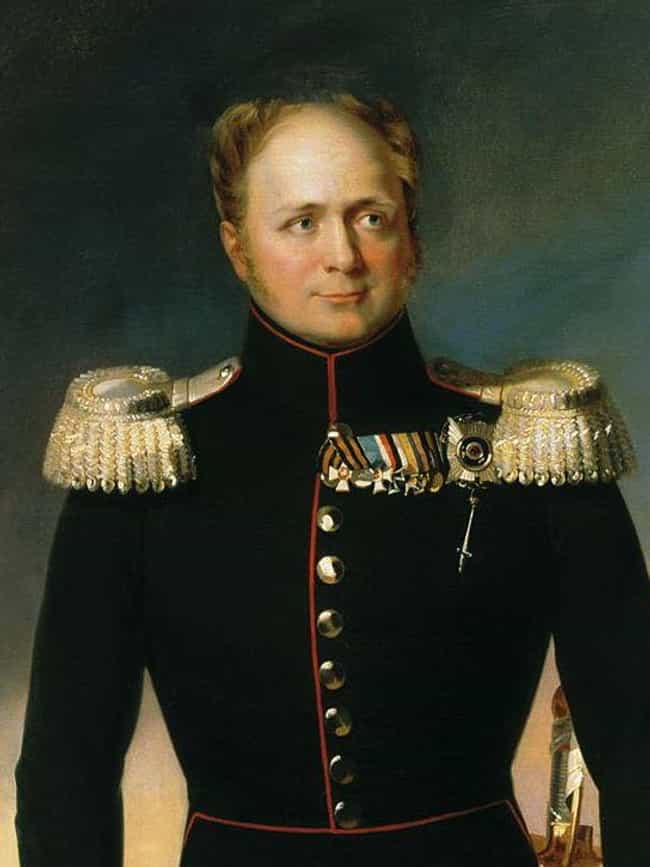
The Story You Know:
It happens time and time again: A celebrity dies a tragic death at a young age. Society mourns. Then, out of nowhere, the death conspiracies start pouring in. Was it murder? Was it suicide? Or maybe, just maybe, the celebrity is still alive.
Two of the most well-known death conspiracy theories focus on Tupac and Elvis. Each theory is supported with various levels of proof: Elvis’s name is spelled wrong on his grave at Graceland (well, kind of). Tupac released songs and music videos posthumously, wearing shoes released after his death in videos. Fans claim to have spotted both Elvis and Tupac all over the world.
The First Time It Happened:
It turns out that death conspiracies are not exclusively a modern practice, and Elvis and Tupac are not the first subjects of such theories. Alexander I of Russia was a popular emperor, celebrated as one of the primary forces in defeating Napoleon. In 1825, at the age of 47, Alexander fell ill. The illness started as a simple cold but soon became typhus. He died in Taganrog shortly after.
To this day, there are conspiracy theories surrounding the death of Alexander I. Some people at the time thought Alexander had grown wary of his position as emperor, particularly after someone attempted to kidnap him, causing him to become suspicious and paranoid. Others thought Alexander wanted forgiveness for the role he may have played in the assassination of the preceding emperor, his father.
While one of his brothers took over the role of emperor, rumors swirled that Alexander had faked his death and relocated to the Siberian city of Tomsk to become a monk named Feodor Kuzmich and live out the rest of his life atoning for his sins. When his wife died a year later, the rumors swelled again, with some insisting she also faked her own death and chose to become a nun alongside her husband.
Like any good conspiracy theory, this one is backed up with alleged proof. In 2015, handwriting samples of Alexander and Feodor were analyzed and compared. Handwriting experts determined that the handwriting could indeed belong to the same man.
Before There Was The Titanic, There Was The Tek Sing
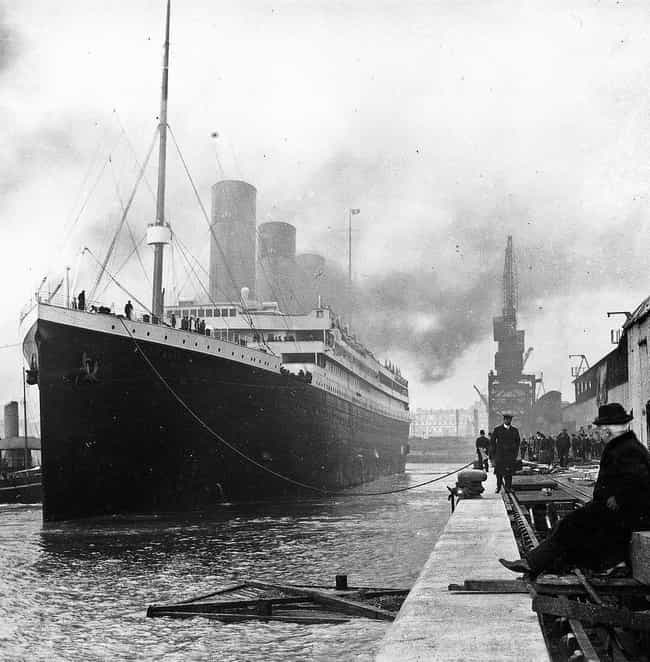
The Story You Know:
On April 15th, 1912, the RMS Titanic sank hours after crashing into an iceberg. Basic facts about the event are well-known: There weren’t enough lifeboats, the ship split in two as it sank into the ocean, and survivors were rescued by the RMS Carpathia. More than 1,500 people lost their lives. It’s a story from more than 100 years ago, but society is still fascinated by it. Replicas have been built, museum galleries have displayed artifacts, and James Cameron’s infamous door scene from his film about the wreck is still debated on social media.
The First Time It Happened:
Ninety years before the Titanic went down in the Atlantic Ocean, there was the sinking of the Tek Sing in the South China Sea. The Tek Sing was sailing from China to Jakarta and was loaded with precious cargo: porcelain, silks, spices, and medicines. In addition to having so much cargo that some of it had to be strapped to the outside of the ship’s hull, it was also carrying 1,600 emigrants hoping to find a better life elsewhere. Because the ship was overloaded, the emigrants were unable to use cabins and instead slept on the deck of the ship. On February 6th, 1822, the Tek Sing sank after crashing into a small barrier reef, resulting in massive loss of life.
Though occasionally referred to as the “Titanic of the East,” the story of the Tek Sing is generally overlooked. While the story of the Tek Sing is far less romantic – emigrants sleeping on the deck of a cargo ship compared to the extravagant maiden voyage of an “unsinkable” ship – many of the Titanic events were a repeat of the Tek Sing’s.
Both the Titanic and the Tek Sing committed fatal flaws prior to beginning their voyages. Beyond being low on lifeboats from the start, the Titanic utilized a “watertight” compartment design that ensured the individual bulkheads were watertight but still allowed water to spill from one compartment to the next. This is suspected to have contributed to the sinking of the ship.
The Tek Sing was overloaded before its voyage began. In fact, when the wreckage of the ship was found 200 years later under silt and coral, many of the porcelain items were still in almost pristine condition because of how tightly they were packed. With the ship so heavily loaded, the Tek Sing was at a much higher risk of sinking.
The demise of both ships also occurred the same way – crashing into something. The Titanic hit an iceberg, while the Tek Sing hit a barrier reef. Both of these crashes could have been avoided if the two ships weren’t doing the same thing – rushing to their destination.
In the case of the Titanic, the ship was going far faster than it should have been. For the Tek Sing, the captain decided to take a shortcut through uncharted waters.
Political Candidates And Slander Have Always Been Synonymous
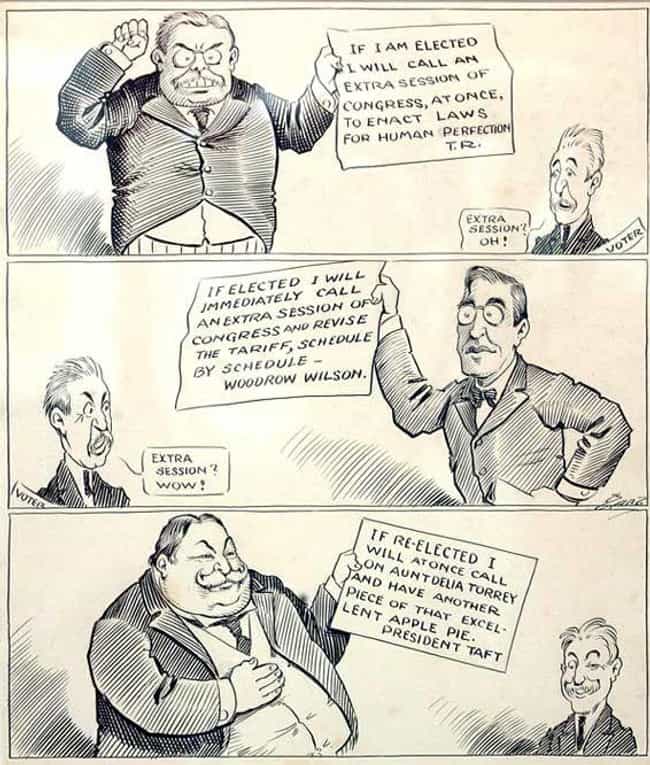
The Story You Know:
The November 2016 Presidential election cycle was a particularly rough one for Americans. The tone of the race was called “exceptionally negative” by the New York Post, and some political scientists worried the election could scar a generation of young voters, making them less likely to cast ballots in the future. Name-calling and accusations thrown between the candidates were just the beginning of the vitriol.
The First Time It Happened:
While many commentators have stated that American politics are getting nastier each year, it turns out that elections have been incredibly toxic throughout many election cycles, with many candidates participating in name-calling and false accusations.
During the 19th century, various candidates were accused of infidelity, substance abuse, cross-dressing, and more, with physical attributes of the candidates being the most common focus of scrutiny. Thomas Jefferson hired a writer, James Callendar, to target John Adams. Callendar ultimately called Adams a “hideous hermaphroditical character” and a “repulsive pedant.” Other candidates were accused of wearing women’s corsets (Martin Van Buren) or of having stinky feet (Abraham Lincoln). In the 20th century, comparing candidates to rodents became a sort of trend, with Teddy Roosevelt calling William Howard Taft a “rat in the corner” and Franklin D. Roosevelt calling Alf Landon “the White Mouse who wants to live in the White House.”
In 2016, the politicians and commentators accused the media of playing a huge part in the toxicity of the election. Some media outlets called out other media outlets for glorifying the behavior of both candidates, while candidates accused the media of favoring opponents. This seems like it would be a new trend because there are a lot more ways to consume news in the 21st century than there were in centuries past.
As it turns out, blaming the media is another aspect of toxic elections that has been repeated for years. Newspapers were the main way news was disseminated in the 19th century, and they affected political campaigns in many ways. Newspapers openly rooted for a particular candidate in any given election and they took no shame in smearing the opposing candidate, writing articles debating the candidate’s sanity and more. This led to candidates blaming the media for a variety of things and directing some of their mudslinging toward the newspapers as well.
There’s Been More Than One Holocaust

The Story You Know:
When most people hear the word “Holocaust,” they think of Adolf Hitler and the atrocities committed by the Nazis in the 1940s in Germany. This is understandable. The Holocaust was a massive genocide that rightfully continues to be taught in schools around the world. Hitler’s plan was to create an Aryan race, which led to him exterminating Jewish people, gypsies, the disabled, gay people, and many others through the use of concentration camps. Germany’s atrocities eventually lead to World War II, in which approximately 60 million people died.
A Previous Time It Happened:
Sadly, genocide has happened many times throughout history. However, one particular genocide also carries the holocaust title: The Armenian Holocaust.
Most commonly referred to as the Armenian Genocide, this holocaust is considered the first genocide of the 20th century. Just as anti-Semitism was nothing new in Germany prior to the rule of Hitler, the Turkish government had looked down upon the Armenians in Turkey for years. The Turkish government, ruled by the Ottoman Empire, believed that the Armenians were “infidels” and treated them unequally by enforcing higher taxes and other unjust restrictions. Armenians attempted to protest this in the 1890s, but this tragically resulted in the state-sanctioned massacre of hundreds of thousands of Armenian protestors between 1894 and 1896.
Things seemingly settled down for a while, but it didn’t last. In 1914, Turkey joined World War I on the side of Germany and the Austro-Hungarian Empire. Turkey began to worry about the Armenians, believing they would gladly fight for the opposing side of the war if it meant equality. This led to the start of the Armenian Genocide on April 24th, 1915.
What followed was the systematic, government-sanctioned extermination of Armenians. Approximately 1.5 million Armenians were killed. When the Armenian Genocide ended in 1922, there were only 388,000 Armenians left in the Ottoman Empire.
There Were Two Economic Recessions Called ‘The Great Depression’
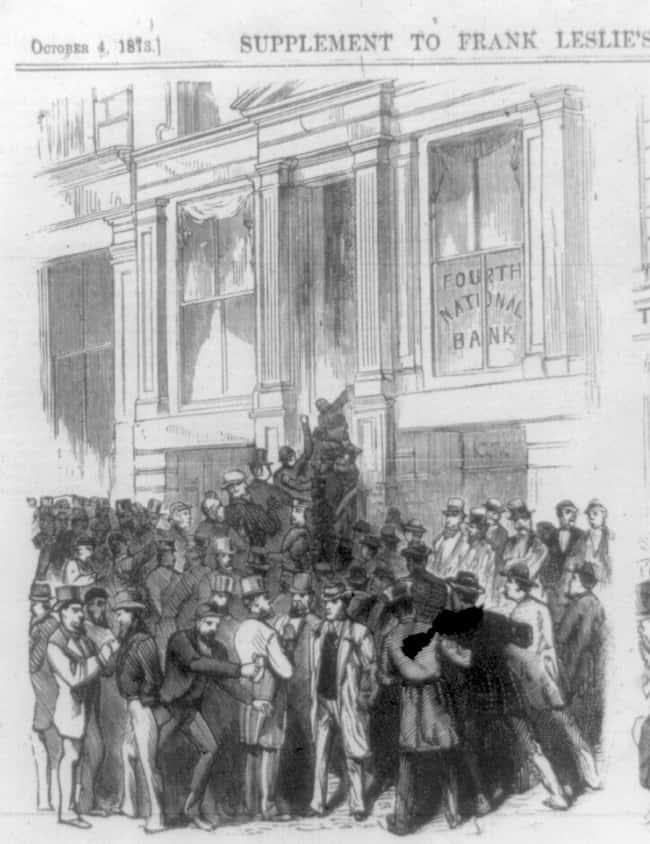
The Story You Know:
The Great Depression is easily the most well-known economic disaster in American history. Taking place from 1929 to 1939 after the stock market crash of October 1929, the Great Depression saw 13 to 15 million Americans unemployed by 1933 with nearly half of the country’s banks failing.
The First Time It Happened:
Fifty-six years earlier, the Long Depression affected the entire world. Originally referred to as the Great Depression (before the name was used for the crash of 1929), the dates of the Long Depression are widely debated. It is often cited as starting during the Panic of 1873 and spanning 20 years until the Panic of 1893. However, the National Bureau of Economic Research dates the depression as lasting from October 1873 to March 1879.
Much like the Great Depression, the Long Depression is believed to have been set in motion by financial institutions making reckless decisions. Optimistic banks and financiers invested in railroad companies that ultimately did not make as much money as projected, which led to a large misuse of credit by banks. People were even having trouble withdrawing cash from banks because the banks simply had none to give out.
Ultimately, the United States saw 18,000 businesses go bankrupt between the years of 1873 and 1879. One survey from Massachusetts in 1878 suggested there were approximately 500,000 people unemployed across the US. Others, however, argued that this figure was comically low.
The Israeli-Palestinian Conflict Is An Eerie Reminder Of The Thirty Years’ War
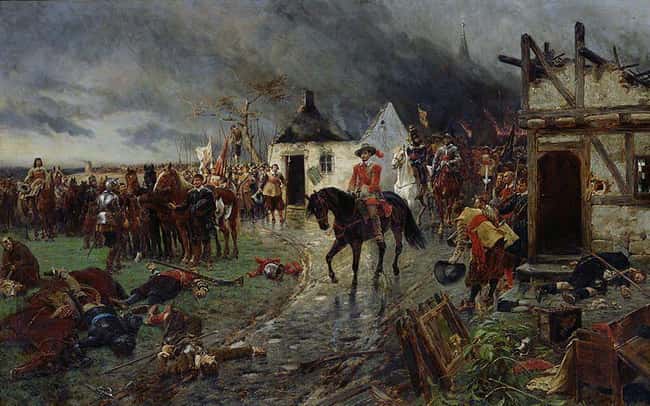
The Story You Know:
The Israeli-Palestinian Conflict is a tragic, ongoing crisis in the Middle East. While it is often simply summarized as being a war over land between Jewish residents and Arab residents, the details of the conflict are much more complex.
Most sources cite the 1930s as the beginning of the conflict, though much of the history contributing to the crisis goes back much further. In 1947, The United Nations attempted to calm the conflict by establishing a partition plan that gave 56.47% of Palestine to the Jewish state and 43.53% to the Arab state, with an international enclave around Jerusalem. The plan, which was rejected by the Palestinians, was never implemented.
Between 1947 and 1993, there were several armed conflicts, including the Six-Day War and the Arab-Israeli War. In 1993, Israel and the Palestine Liberation Organization agreed to a Declaration of Principles, resulting in each side officially recognizing the other and renouncing the use of violence. Unfortunately, violence quickly returned to the area in 1996 and the conflict was reignited.
The First Time It Happened:
Unfortunately, religious conflicts have been quite common throughout the years, but the Thirty Years’ War is, in many ways, incredibly similar to the Israeli-Palestinian conflict. Taking place between the years of 1618 and 1648, the Thirty Years’ War began when the Holy Roman Emperor Ferdinand II of Bohemia attempted to get control over his subjects’ religious activities. This caused the Protestants to rebel, leading to a war for equality between the Protestants and the Catholics. Many of the major European powers fought in the war, which ultimately reshaped the religious and political map of central Europe.
Like the Israeli-Palestinian Conflict, the cost of this religious conflict was huge. During the Thirty Years’ War, which was primarily set in Germany, approximately 20% of Germany’s total population perished, with losses of up to 50 percent in some areas. While the Israeli-Palestinian Conflict has waged long enough that no clear data have been determined regarding total loss of life, it is estimated that from 2000-2008 alone, there have been over 6,000 fatalities.
One positive outcome of the Thirty Years’ War was that the conflict helped end an age of religious wars in Europe. With the Israeli-Palestinian Conflict reflecting the Thirty Years’ War in many ways, we can only hope that the eventual resolution of the conflict results in a similar ending of religious wars in that area as well.
Hitler Was, In Many Ways, Napoleon 2.0

The Story You Know:
Just as the Holocaust is a huge point of discussion in schools, so is its leader, Adolf Hitler. The man behind the deaths of more than six million people via concentration camps designed to eliminate “threats” to the establishment of an Aryan race, Hitler’s name alone represents evil beyond imagination.
The First Time It Happened:
While the name Napoleon Bonaparte doesn’t conjure fear like Hitler’s does, there are many eerie similarities between the two of them. Napoleon Bonaparte was a French military leader and emperor who conquered much of Europe during the 19th century. Described as “shrewd” and “ambitious,” Napoleon was a hero of Hitler’s. Hitler even visited Napoleon’s tomb in France in 1940.
In many ways, Napoleon was more than just a hero to Hitler. While many people recognize Napoleon as a former soldier, it is an often overlooked fact that Hitler too was a soldier. Napoleon rose through the ranks of the military during the French Revolution; Hitler originally evaded military service in Austria-Hungary before eventually volunteering for the Bavarian army and serving on the Western Front during World War I. While Napoleon’s service led to him seizing political power in France through a coup, Hitler’s service led to him coming into control of the National Socialist German Workers Party. Hitler then attempted a coup in 1923 but failed.
Still, both Hitler and Napoleon eventually became dictators. This led to what is probably the most well-known similarity between Napoleon and Hitler: their downfalls in Russia. Both Napoleon and Hitler attempted to invade Russia in the winter, and both of them massively failed.
New research (that is particularly controversial in France) has shown that Napoleon may have also presided over crimes similar to Hitler’s, including the establishment of concentration camps, gas chambers, hit squads, and mass deportations. Whatever your thoughts on Napoleon Bonaparte, one thing remains clear: Hitler’s life was in many ways a repeat of Napoleon’s, something Hitler was likely proud of.









